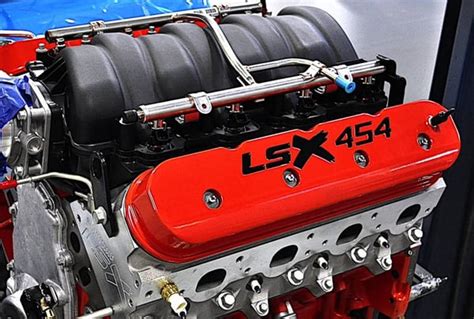Dominate the Road: Unleashing 500HP from a 5.3L Engine
The 5.3L Vortec engine, a stalwart of GM trucks and SUVs for years, is a reliable workhorse. But what if you want more than just reliable? What if you crave the raw power to truly dominate the road? This article explores the exciting world of building a 500HP 5.3L, outlining the key modifications, considerations, and potential challenges involved in transforming this everyday engine into a performance beast.
Why 500HP? The Allure of the Half-Thousand Horsepower Mark
500 horsepower represents a significant power increase over the stock 5.3L's output, placing it firmly in muscle car territory. This level of power translates to exhilarating acceleration, effortless highway cruising, and the ability to easily tow heavier loads. It's the sweet spot where significant performance gains are achieved without necessarily sacrificing reliability (with the right build).
Key Components of a 500HP 5.3L Build: A Deep Dive
Achieving 500 horsepower from a 5.3L isn't a simple bolt-on affair. It requires a carefully planned approach focusing on several key areas:
1. Forced Induction: The Heart of the Beast
Reaching 500HP necessitates forced induction – either a turbocharger or a supercharger. Both offer significant power gains, but each has its own characteristics.
-
Turbochargers: Offer potentially higher horsepower gains at higher RPMs, typically providing better fuel efficiency at cruising speeds due to their on-demand boost. They often require more sophisticated tuning.
-
Superchargers: Deliver immediate boost, leading to a more linear power delivery across the RPM range. Generally simpler to install and tune compared to turbos.
The choice depends on your driving style and budget. A properly sized and tuned supercharger kit is often the more straightforward route to 500HP for the 5.3L.
2. Fuel System Upgrades: Feeding the Beast
Increased horsepower demands a significantly upgraded fuel system. This includes:
- High-flow fuel injectors: To deliver the increased fuel necessary to support the higher power output.
- Fuel pump: A higher-capacity fuel pump ensures sufficient fuel pressure to meet the injectors' demands.
- Fuel rails: May require upgrading for better flow and pressure regulation.
A properly sized fuel system is crucial to prevent lean conditions that can damage the engine.
3. Engine Management System: The Brain of the Operation
The stock engine computer (ECU) isn't designed for 500HP. You'll need a standalone engine management system or a custom tune for your stock ECU to precisely control fuel delivery, ignition timing, and other vital parameters. This is crucial for reliability and to avoid damaging engine components.
4. Supporting Modifications: Strengthening the Foundation
Several other modifications are critical for a reliable 500HP build:
- Internal Engine Upgrades: While not strictly necessary for some 500hp builds, strengthening internals like connecting rods, pistons, and head gaskets is highly recommended for longevity and safety at this power level.
- Exhaust System: A free-flowing exhaust system will help relieve backpressure and improve performance.
- Cooling System: An upgraded radiator, high-flow water pump, and perhaps even an aftermarket transmission cooler are crucial to manage increased heat generated by the forced induction and higher power output.
Addressing Common Questions:
How much will a 500HP 5.3L build cost?
The cost varies drastically based on the components used and the level of custom work required. Expect to invest anywhere from $10,000 to $20,000 or more, depending on your choices.
What kind of transmission will I need?
The stock transmission in many 5.3L applications might not withstand the increased torque of a 500HP build. Consider upgrading to a more robust transmission, potentially a built 4L60E or a more heavy-duty alternative depending on your application.
Is this a DIY project?
While some aspects are DIY-friendly, building a reliable 500HP 5.3L engine typically requires expertise in engine building and tuning. Unless you have extensive experience, it's recommended to seek professional assistance from a reputable engine builder and tuner.
What are the potential risks of such a build?
Incorrect tuning, inadequate cooling, or insufficiently strengthened internals can lead to engine damage, including catastrophic failure. Proper planning, quality components, and professional assistance minimize these risks.
Conclusion: The Journey to 500HP
Building a 500HP 5.3L is a challenging yet rewarding endeavor. With meticulous planning, high-quality components, and professional guidance, you can unleash the immense potential of this often-underestimated engine and dominate the road. Remember that safety and reliability should always be top priorities throughout the entire process.

